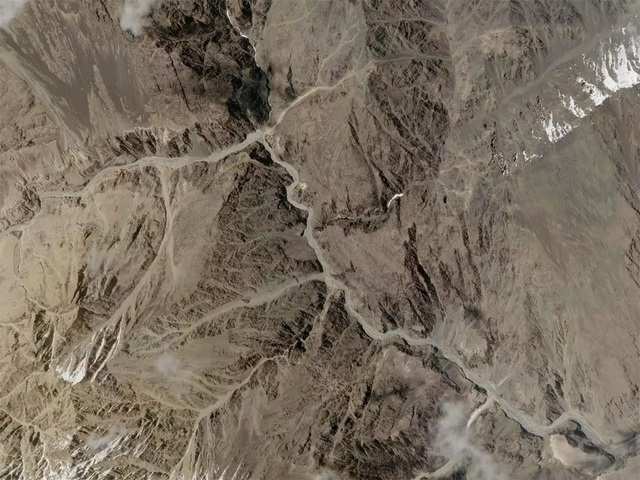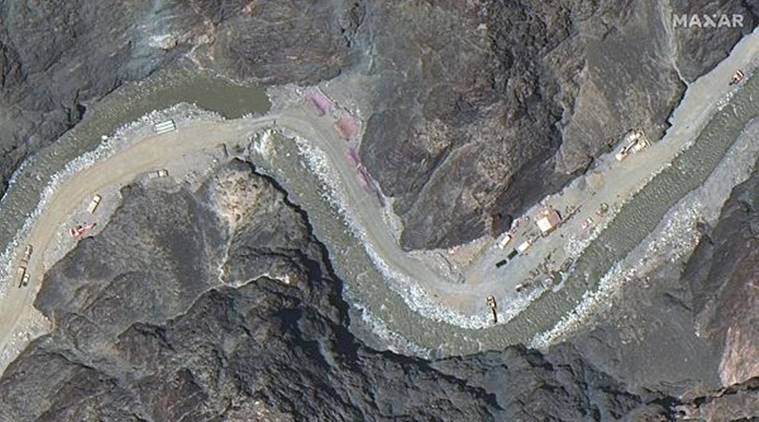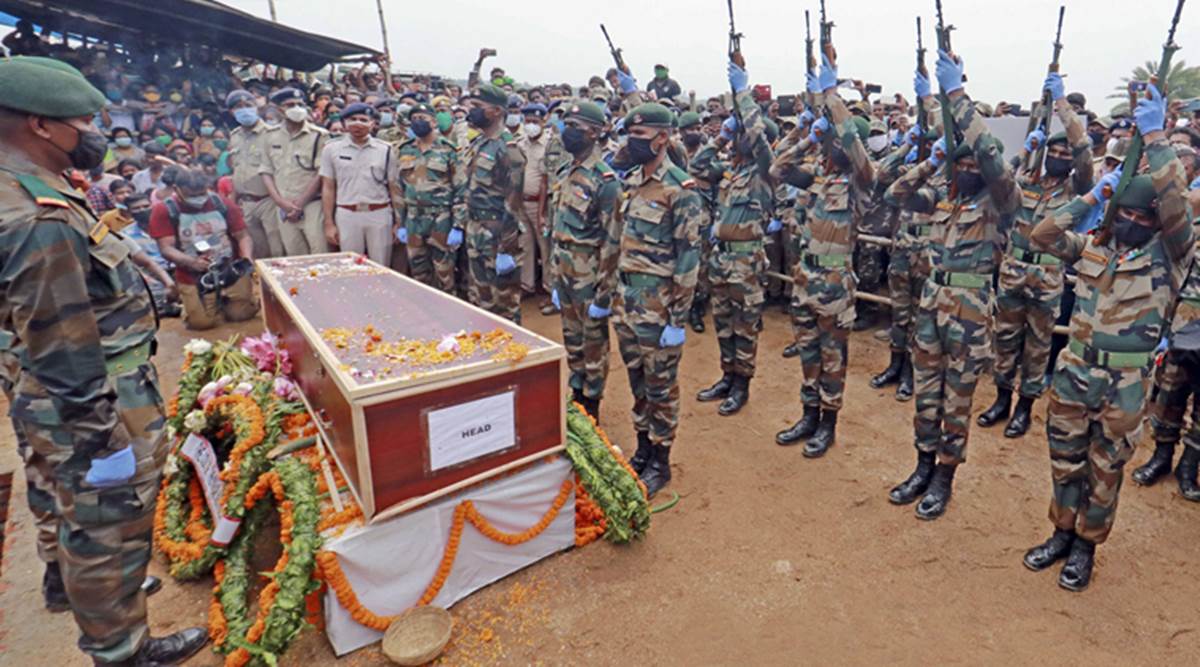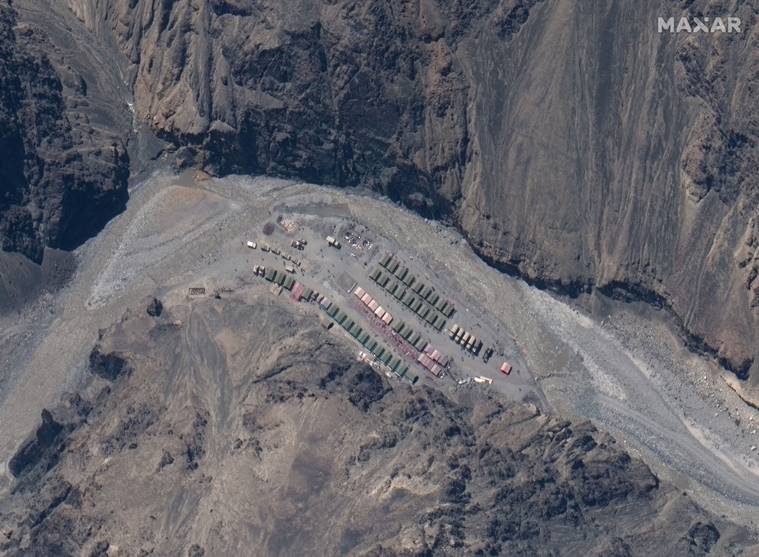Apart from Pakistan and its involvement in the Kashmir conflict, India may now have a third party in the game — Beijing
By: Happymon Jacob
Sometimes, a seemingly rhetorical statement or a symbolic political decision has the undesirable ability to fundamentally alter the material reality around a particular issue, especially when it comes to sensitive international disputes and conflicts. The impact of the Bharatiya Janata Party-led government’s decision on Kashmir in 2019 on the current China-India military standoff on the Line of Actual Control (LAC) is one such phenomenon. As a political scientist, I am aware of the apparent “methodological overreach” in my attempt at linking the two even though it might not be an analytical overreach. Consider the following.
What is becoming clear now is that by “inventing” a rhetorical position around the issue of Aksai Chin, a territory India may never have intended to take back by force from China, New Delhi seems to have aggravated the existing Chinese sensitivities on it. Put differently, India’s infrastructure-building activities on its side of the LAC and the China’s China-Pakistan Economic Corridor (CPEC) connectivity to Pakistan were already on a collision course, and it seems the reorganisation of Jammu & Kashmir (J&K) on August 5 last year, and the rhetoric surrounding it, may have finally triggered a conflict that was building up for a long time.
The ground reality
The impact of August 5 has been felt on two fronts — China and Pakistan. Official data show a steady rise in violence in Kashmir since 2014, and the August 2019 decision has done little to reduce this despite the restrictions of movement and a heavy security presence in Kashmir. Early trends on violence in 2020 show that the levels of violence will indeed cross those of 2019.
The impact of August 5 goes beyond a mere spike in violence in Kashmir. Since August, retired Pakistani officials close to the establishment have argued that in the wake of India’s Kashmir decision, the Simla Agreement of 1972 — which forms a key basis of bilateral relations, including the management of the Line of Control (LoC) in Kashmir — is not valid anymore. The Pakistani side argues that the Indian decision vis-à-vis Kashmir goes against the spirit of the Simla Agreement since the agreement states that “pending the final settlement of any of the problems between the two countries, neither side shall unilaterally alter the situation….”. This of course does not take away from the fact that Pakistan has altered the situation in Pakistan Occupied Kashmir (PoK) several times over in the past.
If this indeed reflects an emerging official thinking within Pakistan, this might have serious implications. For one, this would mean that the agreement governing the India-Pakistan border in J&K will no longer be the Simla Agreement but would, as a result, have to be the one signed between the two sides in Karachi in 1949, at the end of their first war in 1948. Since the Simla Agreement formalised several territorial changes which took place after 1949 and until December 1971, such territorial adjustments could become null and void. This raises two specific issues. For one, since the current ceasefire agreement between India and Pakistan (declared in 2003) is essentially a reiteration of the ceasefire agreement declared at the end of the 1971 war, this could mean an end to the existing ceasefire agreement between them. Second, if “Simla is dead”, does it mean that the LoC that came into being (replacing the ceasefire Line in 1971) also stands nullified? In other words, the entire basis of India-Pakistan negotiations on J&K since 1972 may cease to exist if Pakistan decides to undermine the Simla Agreement, or accuse India of having done so by the August decision and then decide not to abide by it.
The China challenge
Let us return to the impact of August 5 on the current India-China stand-off. It was clear soon after the August decision that Beijing was deeply uneasy about India’s decision for at least two reasons. One, India’s strong official claim about a territory, Aksai Chin, that has been under the Chinese control; and two, bringing Ladakh under India’s central rule annoyed Beijing since it considers Ladakh’s borders to be disputed between them. From Beijing’s perspective, the August decision also complicated the ongoing boundary talks between the two sides. Pakistani appeals to Beijing to push back against India may have sharpened the Chinese reaction. There is also some similarity between the Pakistani and Chinese positions on India’s August decision: both sides argue that India changed the status of a territory (J&K) whose borders were still being negotiated.
Foreign Minister Subrahmanyam Jaishankar’s visit to Beijing in August 2019 and his assurances to China that India’s decision had “no implication for the external boundaries of India or the Line of Actual Control with China. India was not raising any additional territorial claims. The Chinese concerns in this regard were misplaced” did not calm Beijing. Mr. Jaishankar was right about the implication of the reorganisation of J&K, but not the Home Minister’s statement about Aksai Chin. China took the position that India “continued to damage China’s territorial sovereignty by unilaterally modifying the form of domestic law” and that it was “unacceptable”.
Fallout of India’s official stand
Cut to June 19, 2020. Prime Minister Narendra Modi, after an all-party meeting to discuss the LAC stand-off, stated: “Neither is anyone inside the Indian territory nor any of our border posts captured.” Notwithstanding the clarifications from his Office, leading to even more controversy, the question is whether this was a deliberate climb-down from the August rhetoric so as to calm nerves in Beijing. We do not know. What we do know, however, is that the climbdown, if indeed that was the case, was not only ineffective but may also have had the opposite effect. Going by the Chinese statements thereafter, the Prime Minister’s clarification has clearly been used by Beijing to justify its position on the LAC. It could now further embolden China to undertake more border raids and land capture attempts.
For both India and China, the region is of great strategic importance. For India, Chinese aggression close to Eastern Ladakh could frustrate its hold over Siachen glacier and compromise its security in the western frontier given the close partnership between Islamabad and Beijing. For China, the region is important for the CPEC and its access to Central Asia, both of which are part of its “Belt and Road” grand strategy.
More worry
More so, as a second-order consequence of the August decision, New Delhi may have unwittingly brought China and Pakistan closer than ever on the Kashmir question. From being somewhat neutral on the Kashmir question in the 1990s and 2000s, China today is an aggrieved party, or so it claims, in the Kashmir conflict. If Pakistani involvement in the Kashmir conflict were not enough, we now have China in the game as well as a much more powerful third party.
Furthermore, we have always known that China and Pakistan shared a formidable strategic alliance and yet, by wisely deemphasising that and dealing with them separately — not as a strategic alliance — New Delhi had contained their combined effect on itself to a great extent. Not anymore. Our strategy should have been to continue to weaken the China-Pakistan alliance by engaging China economically, multilaterally and regionally. Instead we may have brought them closer than ever.
The lesson is self-evident. A country the size of India can ill-afford to be narrowly tactical in its foreign and security policy decision making. Geopolitics in Southern Asia is changing way faster than we previously imagined and, therefore, our decisions should not be made based on tactical and political considerations, but on cold, clear-headed strategic assessment.
Happymon Jacob teaches national security at the School of International Studies, Jawaharlal Nehru University, New Delhi
With inputs from The Hindu
This story has not been edited by Kashmir Today staff and is published from a syndicated feed
Disclaimer: The opinions expressed within this blog are the personal opinions of the author. Kashmir Today is not responsible for the accuracy, completeness, suitability, or validity of any information on this blog. All information is provided on an as-is basis. The information, facts or opinions appearing on the blog do not reflect the views of Kashmir Today and Kashmir Today does not assume any responsibility or liability for the same.



 Army jawans pay gun salute to Rajesh Orang during his last rites at his ancestral village Belgoria in Birbhum district of West Bengal, Friday. (PTI)
Army jawans pay gun salute to Rajesh Orang during his last rites at his ancestral village Belgoria in Birbhum district of West Bengal, Friday. (PTI) Lt General (retd) AL Chavan, who also served as Division Commander of the 3rd Infantry Division, responsible for eastern Ladakh, told The Indian Express “it appears to be a proper defensive position which has been developed by the Chinese”.
Lt General (retd) AL Chavan, who also served as Division Commander of the 3rd Infantry Division, responsible for eastern Ladakh, told The Indian Express “it appears to be a proper defensive position which has been developed by the Chinese”.